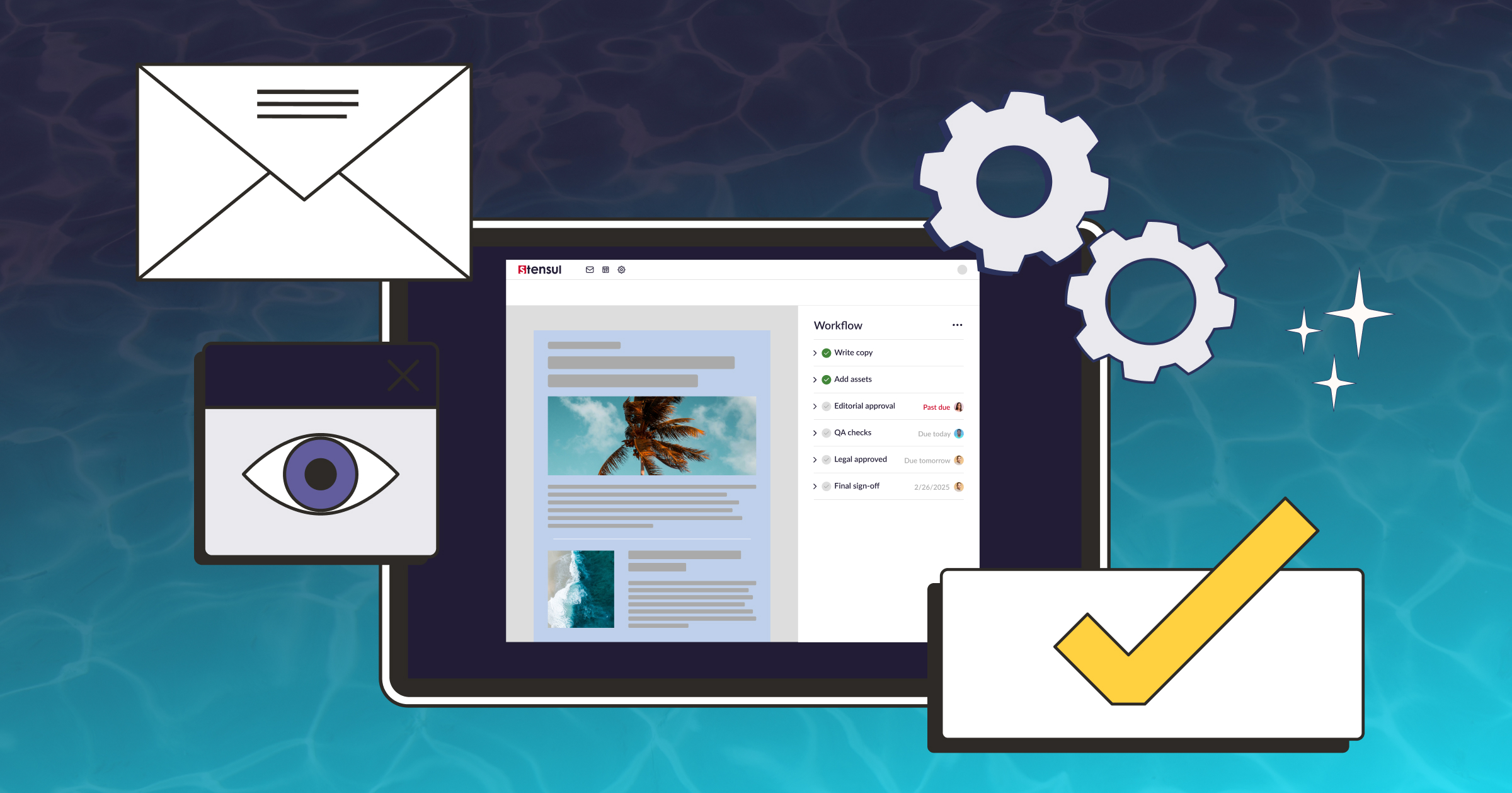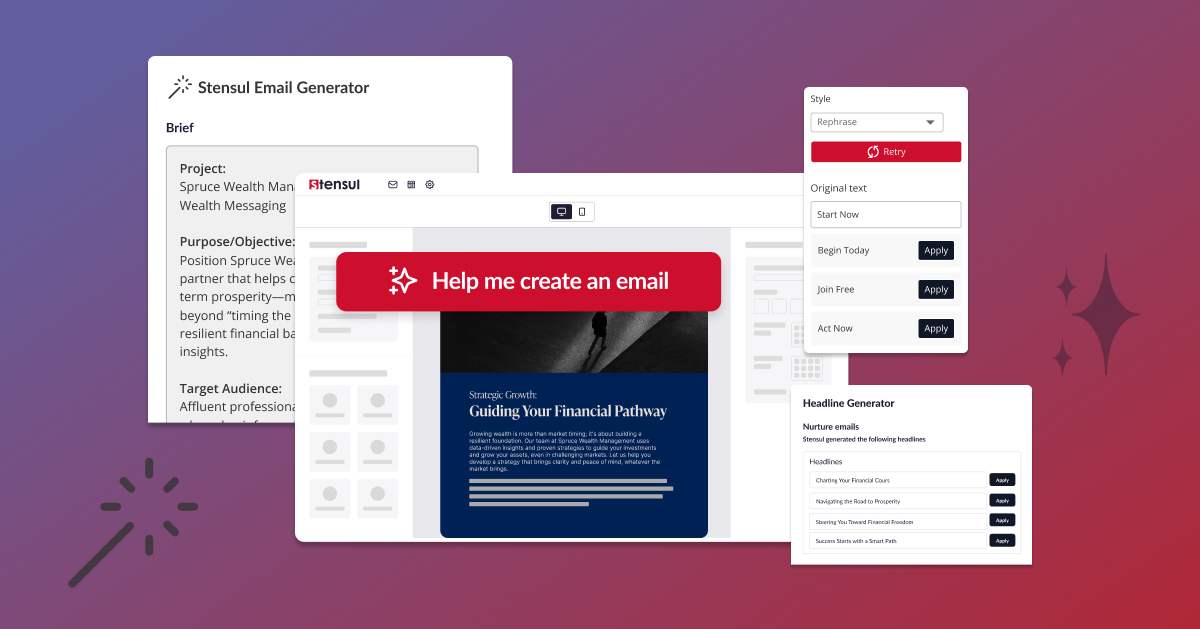Personalization is like a silver bullet, a magic potion, or a miracle for email marketers and MOPs pros.
Put a name in the “From” line and open rates can go up 25% or more. Change just one bit of information in a single field in an email, and there’s an excellent chance response rates will rise by 5% to 10%. Get more sophisticated in your personalization by incorporating behavioral triggers, and as much as a 50% increase in conversion rates won’t be out of the question.
From inserting a name in the “From” line to applying dynamic content, you know email personalization works. It also takes a lot of work, much of it done inefficiently.
The main reason that’s the case is how many organizations create emails. The process is woefully inefficient. It takes two or more weeks for 80% of companies to get one marketing email ready to deploy.
With all that time taken up by email production-related activities, how is it possible to develop and then insert content variations to appeal to an assortment of audience segments? For that matter, is there even time to conduct segmentation?
It is possible to regain the time the traditional email creation process steals by putting an email creation platform at the center of your email creation process.
An email creation platform reduces email creation time from weeks to hours, if not minutes. It brings everyone involved in making an email together in a single, collaborative environment to simplify and streamline the overall process, powering more efficient workflows and faster production cycles. It also removes much of the time-consuming back-and-forth, especially involving reviews and approvals, from the process.
An email creation platform lets non-technical team members create emails that are on-brand, compliant, and responsive every time. Robust guardrails will have every element of your corporate branding guidelines programmed in.
An email creation platform does not deploy emails. It sits in front of your ESP or MAP, allowing you to leverage its core strengths. Beyond that, an email creation platform can integrate with more than your deployment platform. It seamlessly connects to most of the components in your martech stack, enabling them to perform more efficiently and deliver even more value.
Create audience-segmented emails efficiently
The key to serving different audiences is identifying more than where they are. It’s about who they are and what they like, among other factors. That’s email segmentation, and there are six types:
- Geographic—The audience’s location as it relates to countries, regions, cities, or postal codes.
- Demographic—The audience’s age, gender, occupation, and education level, among other things.
- Cultural—What’s truly special about the audience that may impact how you need to connect, relate, or communicate.
- Occasional—The one problem you solve—like Coke addresses quenching thirst—at a specific moment/place.
- Behavioral—Their attitudes, loyalties, and usage preferences.
- Psycho-graphic—The habits, interests, and opinions of the audience.
Once you have insight into your targeted audience segments, applying it to email creation means creating multiple versions of a single email. Fortunately, a full-featured email creation platform can help maintain efficiency in email creation—even when there are many audience segments—with Reusable Content.
With Reusable Content, you avoid repetitive design steps, speeding up the process and preventing bottlenecks when creating audience-segmented emails. Creating an email in the email creation platform lets you save and update modules for easy reuse in multiple emails, no matter how many audience segments your campaign might have.
Handle language localization efficiently
Along with adapting to the needs of your local audience segments, a multi-market email campaign will succeed if it speaks to them in the language they’re most comfortable using. A survey conducted across 29 countries and among Spanish speakers in the U.S. found that 76% of respondents prefer to buy products when they can get information on those items in their language.
Although localizing to the language of the segment is a must, creating emails in multiple languages can be more efficient if you make those emails in an email creation platform. Creating multiple language emails in that platform reduces the time required to create the email. You create one email and then produce as many language variations as the effort requires, saving as much as 75% over the typical approach.
An email creation platform transforms the entire translation work stream for emails, making every step more efficient. It produces a base language file that can then be pushed to any leading translation platform. When that process is done, you can easily import the file into the email creation platform, which creates localized versions of the initial email in seconds, ready for quick, collaborative review and approval.
Create dynamic content efficiently

Dynamic email content is a sophisticated form of personalization. It lets you place if/then statements. If the subscriber is male, show men’s content and women’s content for a female. The email is then dynamically populated with the appropriate content when it’s sent.
An exciting extension of dynamic content is live content. It lets the right content appear when the email is opened based on location. For example, if a subscriber opens an email using live content from a national retailer in a warm climate, the email can show bathing suits. The email can show snowsuits if it’s opened in a cold climate.
As exciting as that is, creating emails using that kind of content can take a lot of work. But an email creation platform makes it far less daunting.
An email creation platform integrated with your ESP/MAP lets you create emails with dynamic content in that platform, keeping the less skilled out of the deployment platform and allowing the creation process to occur without a problem.
An email creation platform lets you create the email at a base level while having the dynamic content part produced in the ESP/MAP. In this way, you can preview the content to see how it will look and read in the email. This approach will save the time to produce proofs from the ESP/MAP, which often leads to a review process that takes too long and causes too much frustration.
In addition, an email creation platform integrates with a live content platform to make that part of the email creation process easier and yield a more certain outcome, all done with drag-and-drop simplicity.
To learn more about how you can make your email personalization efficient, download the Stensul eBook, The MOPs’ guide to efficient email personalization.




